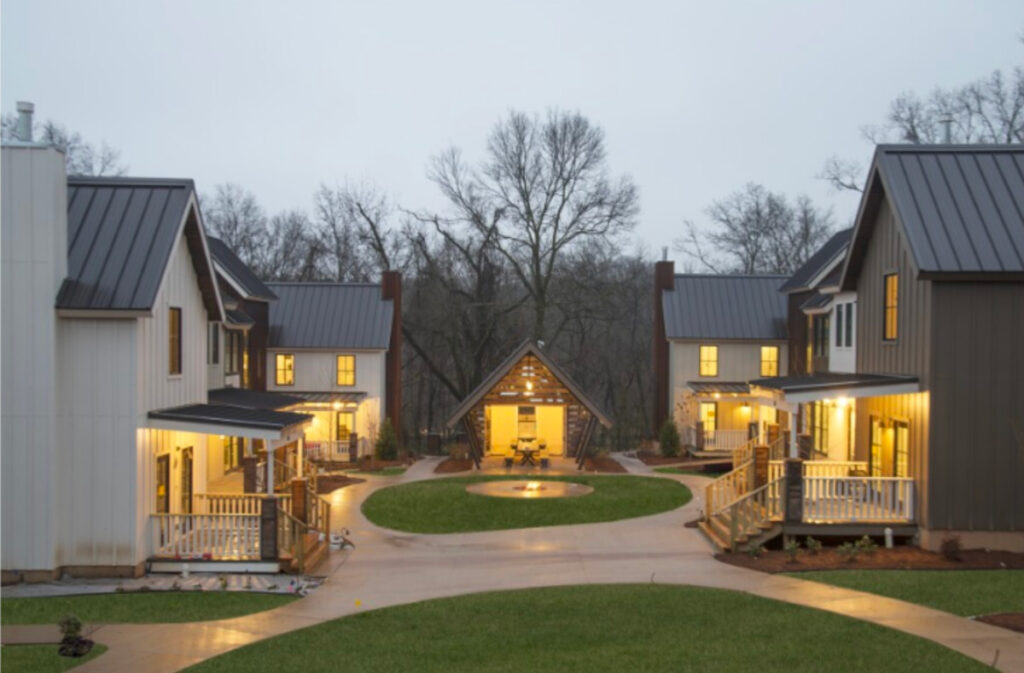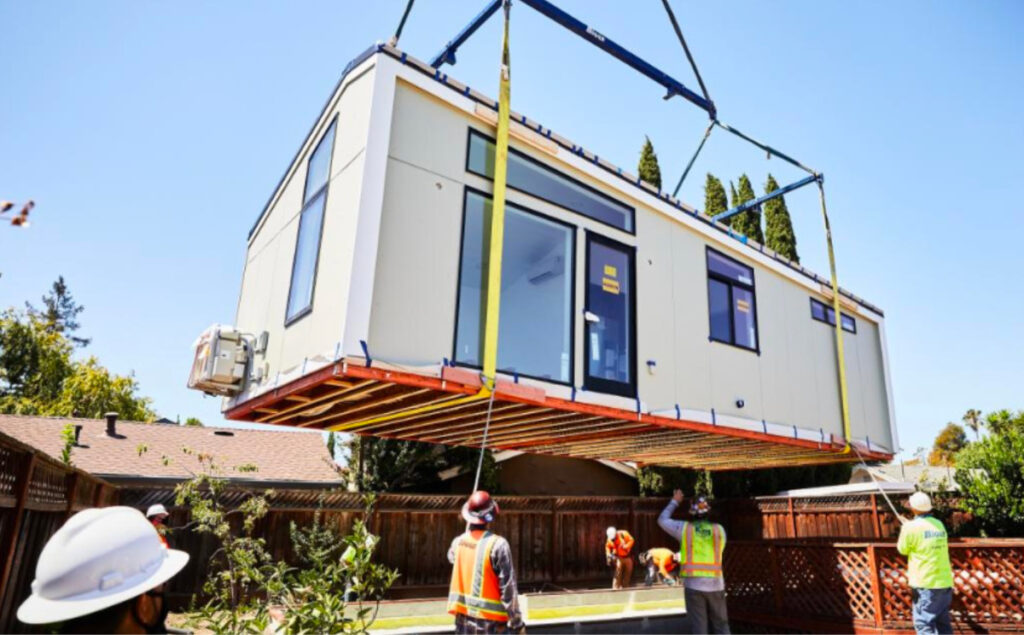By transforming how we approach housing production, communities can create immediate, meaningful progress in addressing critical housing shortages
By Ryan Kilpatrick

The housing crisis isn’t just a statistic — it’s a deeply human challenge that touches every corner of our nation and requires solutions now. Most markets are dramatically under-producing housing, falling short by a staggering three to five times the number of homes needed to support the growing number of households in a region.
Talk to local builders or lenders, and you’ll hear a familiar refrain of seemingly insurmountable obstacles. Skilled trades are stretched thin. Financing options are limited. Developable land that is properly zoned is scarce. The entire ecosystem appears to be operating at maximum capacity, leaving little room for growth.
Beyond Roadblocks: A Practical Vision for Change
Creating a healthy housing ecosystem isn’t about waiting for perfect solutions — it means creating immediate, meaningful progress with an attitude of continuous improvement over time. And let’s be clear, no one can afford to wait years for systemic change.
Right now, local businesses are trying to hire. School districts are seeking educators. Young professionals are launching their careers. Seniors are struggling to maintain their independence.
To those who are close to the industry, it seems like the perfect moment in time to transition to more off-site construction where labor supply and environmental factors are less volatile, yet many local communities are nervous about adjusting permitting frameworks to accommodate off-site housing production.
The key is to start small, but think strategically.
Create Tangible Momentum
Cities and towns rarely mobilize around abstract concepts, but they can rally around concrete, visible progress. If you’re in an area that is just beginning to consider the potential for off-site construction, try a small number of simple but potentially inspiring starting points:
• Build a pocket neighborhood for year-round residents on a previously overlooked parcel. A small neighborhood of six to 12 quaint cottage homes clustered around a common green space with smart landscaping and parking tucked in the rear. It could be a quick win for a locale that is housing challenged. It also can become a great prototype for the local permitting office to get accustomed to the housing type and installation process.

• Rehabilitate an underutilized mobile home park with new manufactured homes, improved infrastructure, and community amenities. While getting a vacant parcel of land zoned to allow for new manufactured housing can be difficult in many places, there are hundreds of older communities that could use attention. These can be excellent opportunities for site cleanup, better landscaping, and new homes to reset the local community’s understanding and acceptance of this type of housing.

• Partner with a handful of homeowners in a specific neighborhood to provide backyard cottages or accessory dwelling units. Work out the financing with three to five homeowners in a local neighborhood to ensure they will achieve a positive return on investment from rental income or savings that stem from caring for an aging loved one at home rather than paying for assisted living. Then quickly install all five backyard cottages over the course of a few weeks and host a neighborhood block party and open house so that the whole community can walk through these new units and hear from the homeowners about why they made the choice to add a modular unit, for instance, to their property.
These aren’t just housing projects — they’re transformation initiatives for local governments and the communities they serve. Use them as opportunities to communicate broader housing needs and to show how off-site production can help to support meaningful and positive changes in their own communities. Start small, then scale. And talk about it incessantly.
More Than Construction: A Learning Opportunity
Each housing initiative is a chance to do two critical things simultaneously:
1. Create Housing: Address immediate needs for housing at a variety of price points
2. Build Community Understanding: Illuminate the broader context of housing needs and common barriers to housing where broader solutions are needed.
In your communication materials, you’ll want to ask and answer the crucial questions:
• Who will be served by this housing?
• Why are these residents important to our community?
• How many others share similar housing challenges?
• What would it take to scale this solution? What are the barriers in the way of doing more of these projects?
• Who can help in the community and how can they get engaged?
Turn Barriers into Opportunities
You’ll inevitably still encounter obstacles — overly restrictive parking requirements, the building department isn’t communicating well with the planning department, utility connection fees aren’t what you were told they would be, or a couple of neighbors simply don’t want to see any changes on that vacant lot. But here’s the revolutionary approach: view each barrier as a communication opportunity.
Use these barriers to educate the local residents and stakeholders about how this difficult process is indicative of the broader regional housing shortage. Build a broader understanding of how each piece of the process, no matter how seemingly small, is impacting the area’s ability to grow. And create alliances for systemic change. Don’t ever miss an opportunity to align your goals and objectives with those of another influential organization or person.
These initiatives will feel endlessly frustrating. But if you toil for months (or years) on one project and view all the problems as things you never want to face again, what was the point of the exercise? Instead, view all of those obstacles as the things to lean into the hardest.
The obstacle is the way.
The Path Forward: Intentionality as the Greatest Tool
Housing isn’t just about buildings. It’s about people. It’s about creating spaces where individuals and families can thrive, where communities can grow, and where potential can be realized.
Transformation doesn’t happen by accident. It requires delib- erate, strategic action — a commitment that goes far beyond a single project or isolated effort. Each housing initiative is a potential blueprint, a learning opportunity that could inspire hundreds or even thousands of similar developments. But this potential can only be unlocked through intentional, transparent communication, and rigorous problem-solving.
The Anatomy of Sustainable Change
Every project will face challenges, and some will be systemic — deeply rooted in outdated regulations or complex economic constraints. Others will be more immediate and practical: poor planning, project management hurdles, neighborhood dynamics, or resource misalignments. The true measure of a small government’s resilience isn’t the absence of these challenges, but its collective ability to:
• Recognize obstacles transparently
• Document and share lessons learned
• Develop adaptive strategies
• Build a network of support and knowledge exchange
Community as Collective Problem-Solver
The most powerful resource in addressing housing challenges isn’t money or policy — it’s collective will.
By starting small, staying persistent, and maintaining a com- passionate, strategic approach, we can transform our housing ecosystems — one initiative, and one conversation at a time. But this transformation demands more than good intentions. It requires unwavering commitment, political will, and a shared vision of community well-being.
Our housing future isn’t predetermined. It’s carefully, intentionally crafted — by us, for us, with every challenge we face and every solution we implement.
Ryan Kilpatrick, owner of Flywheel Companies, has a background in economic development, housing finance, community design, and development finance. He is the former executive director Housing Next, where he helped to define access to housing as a core economic development issue for West Michigan through data-oriented dialogue and partnership with employers, local municipalities, chambers of commerce, and developers. He is certified professional with the American Planning Association and the National Development Council’s Economic Development Finance Professional, and is co-author of the Michigan Statewide Zoning Reform Toolkit.
MHInsider is the leader in manufactured housing news and is a product of MHVillage, the top marketplace for manufactured homes.







